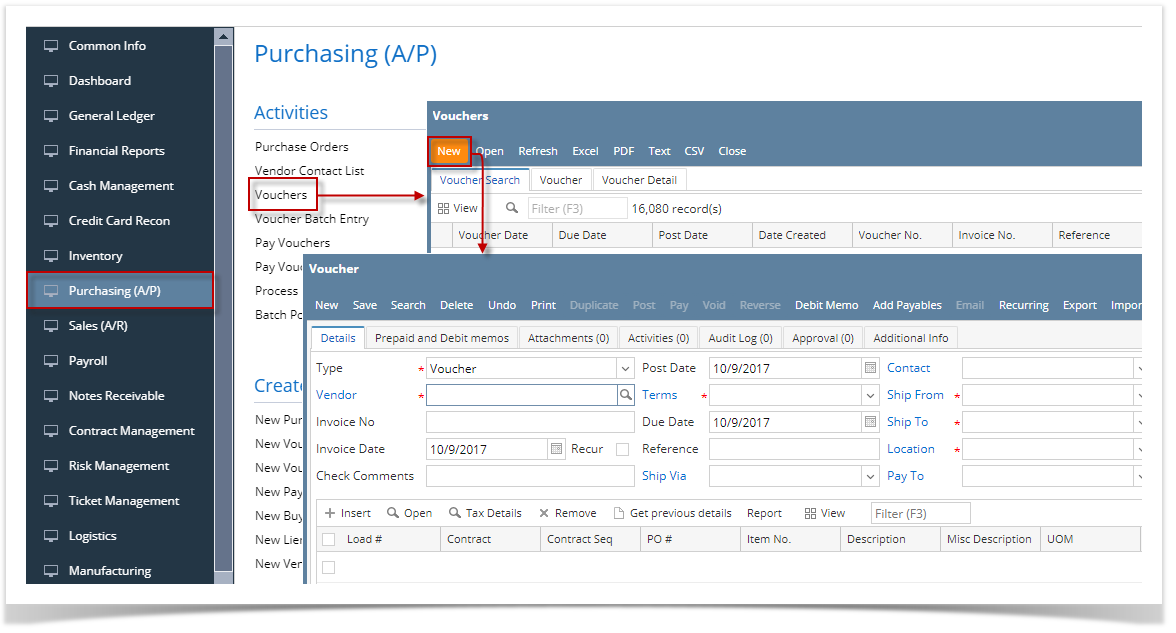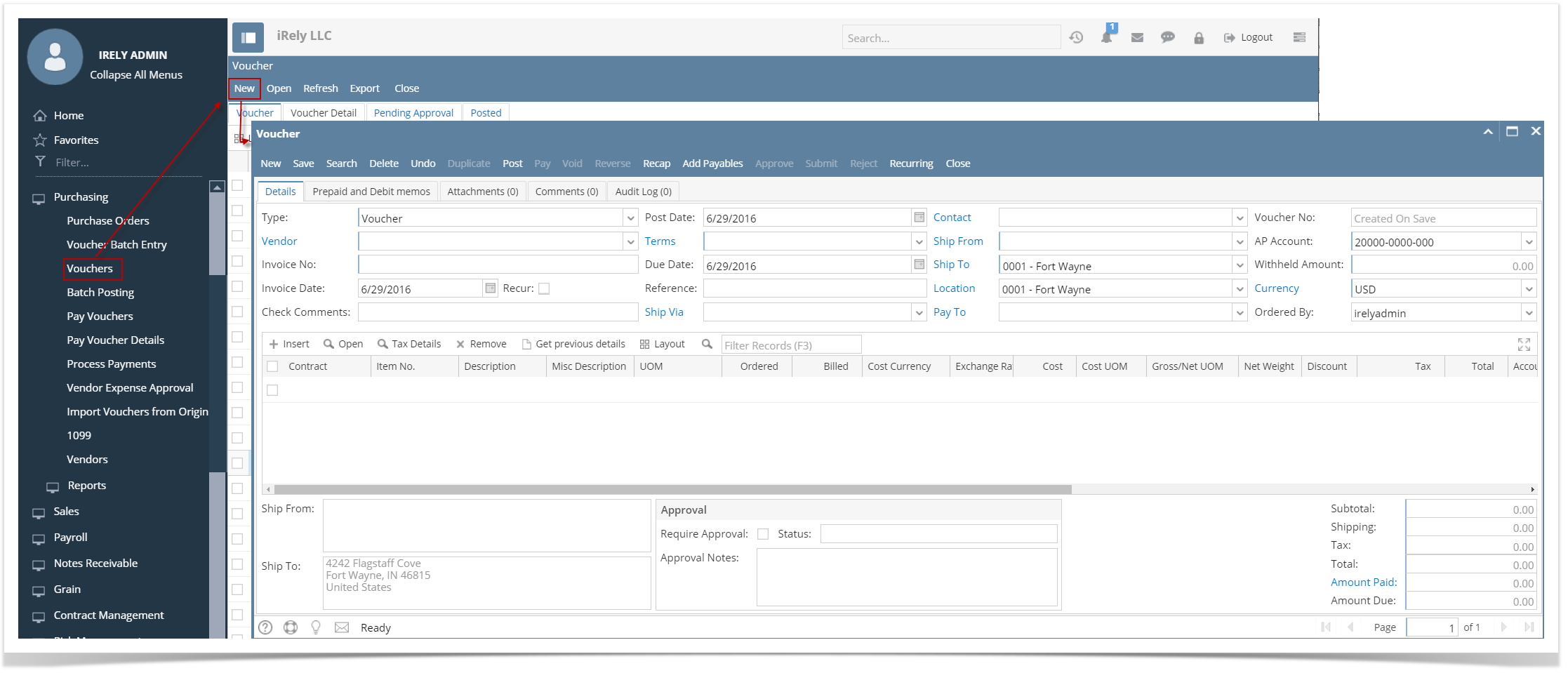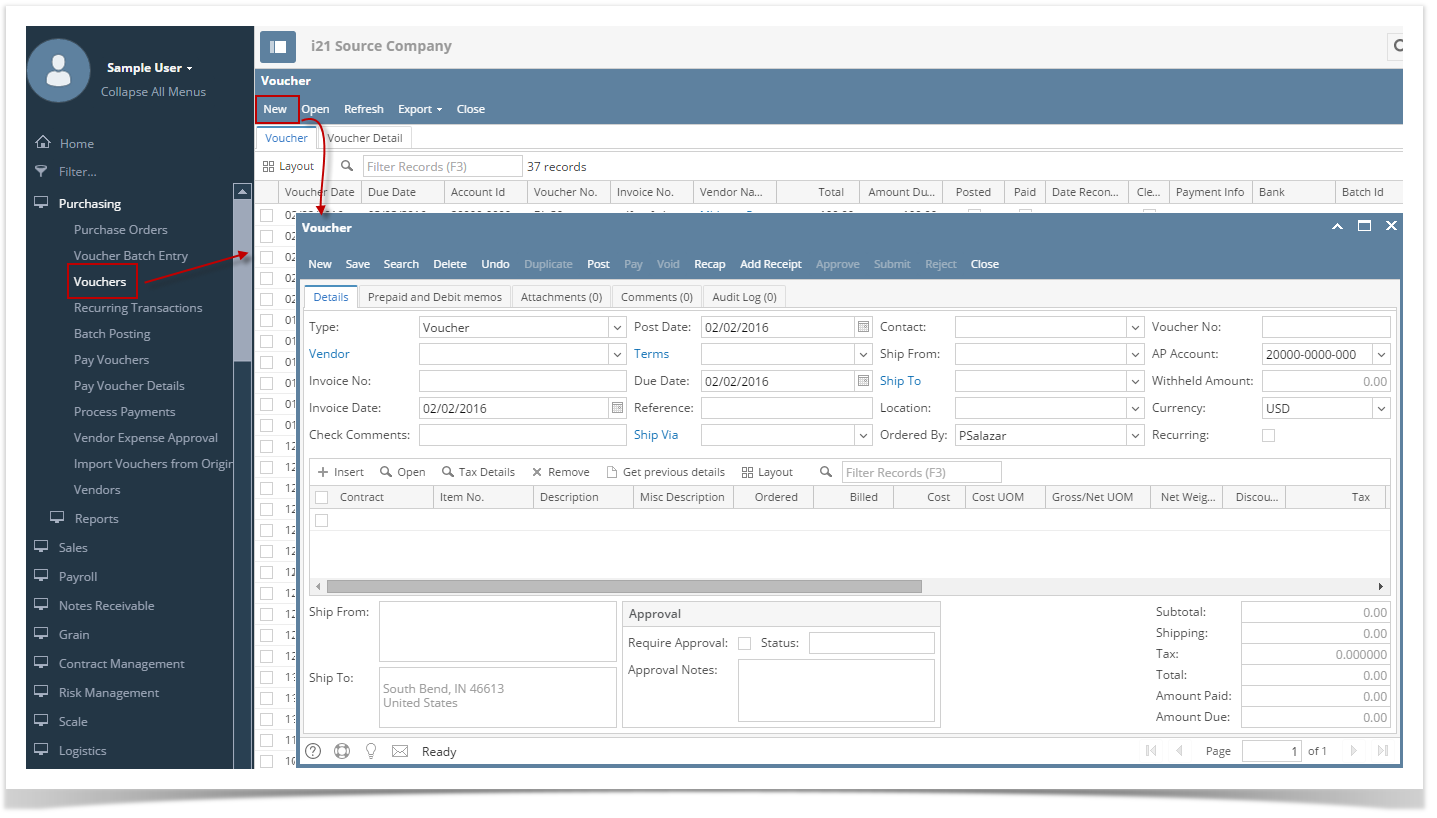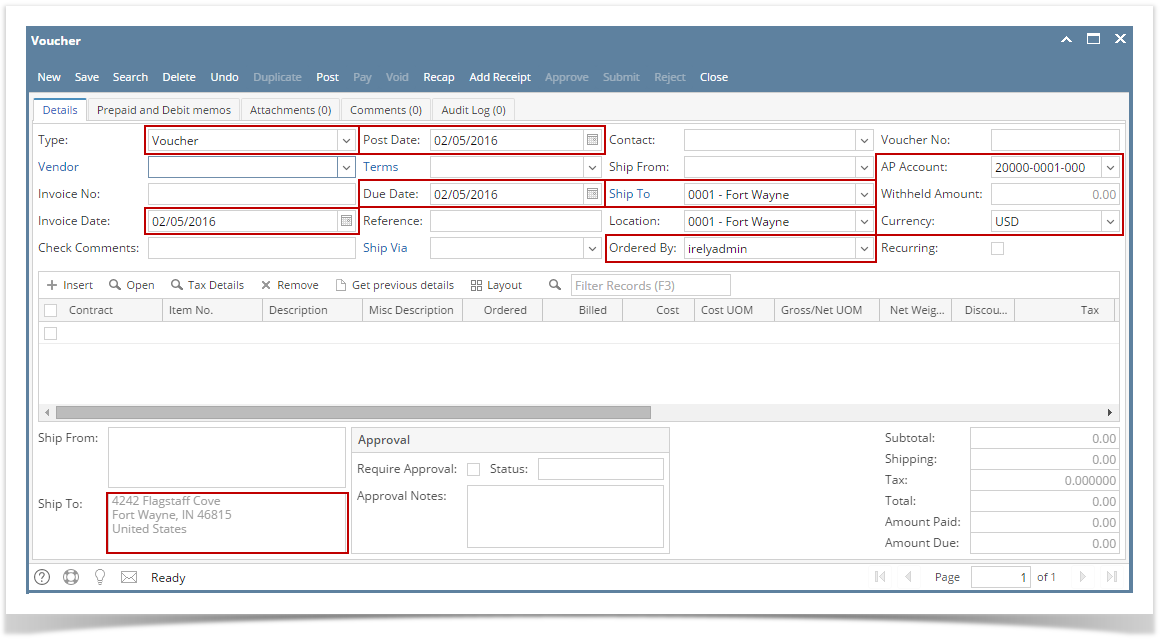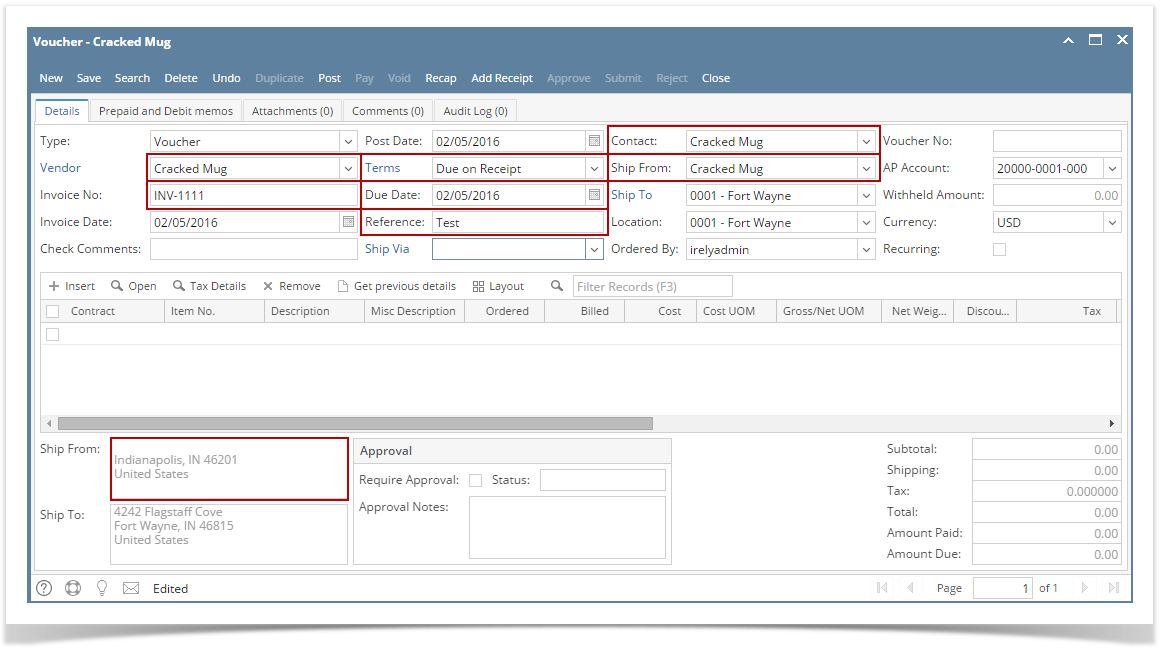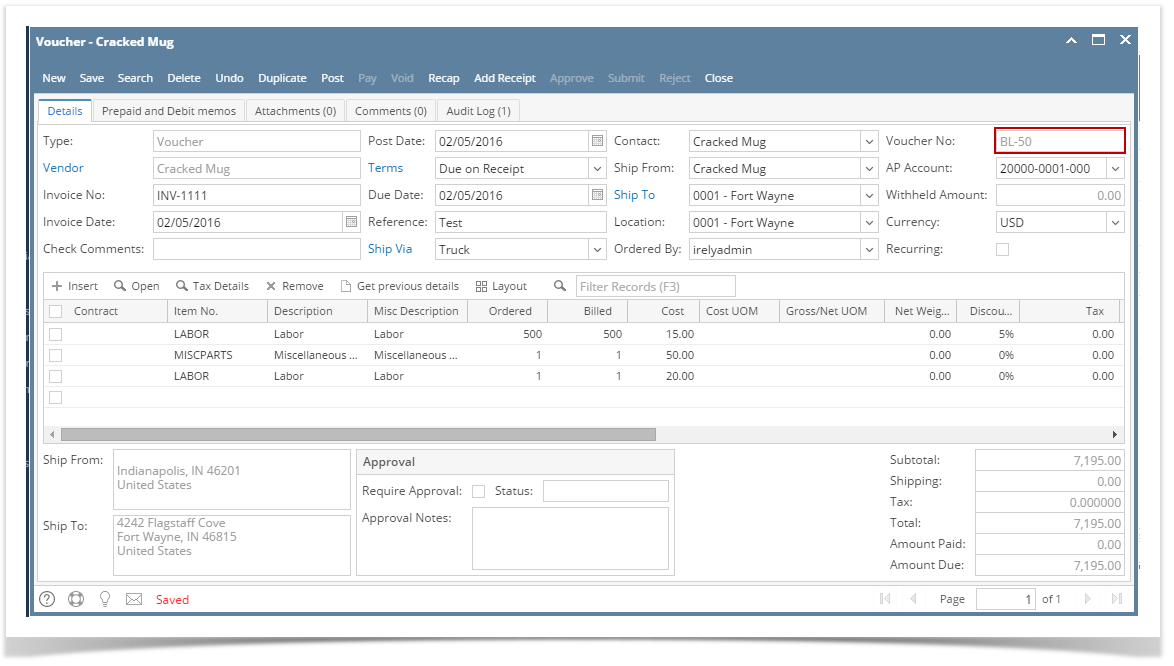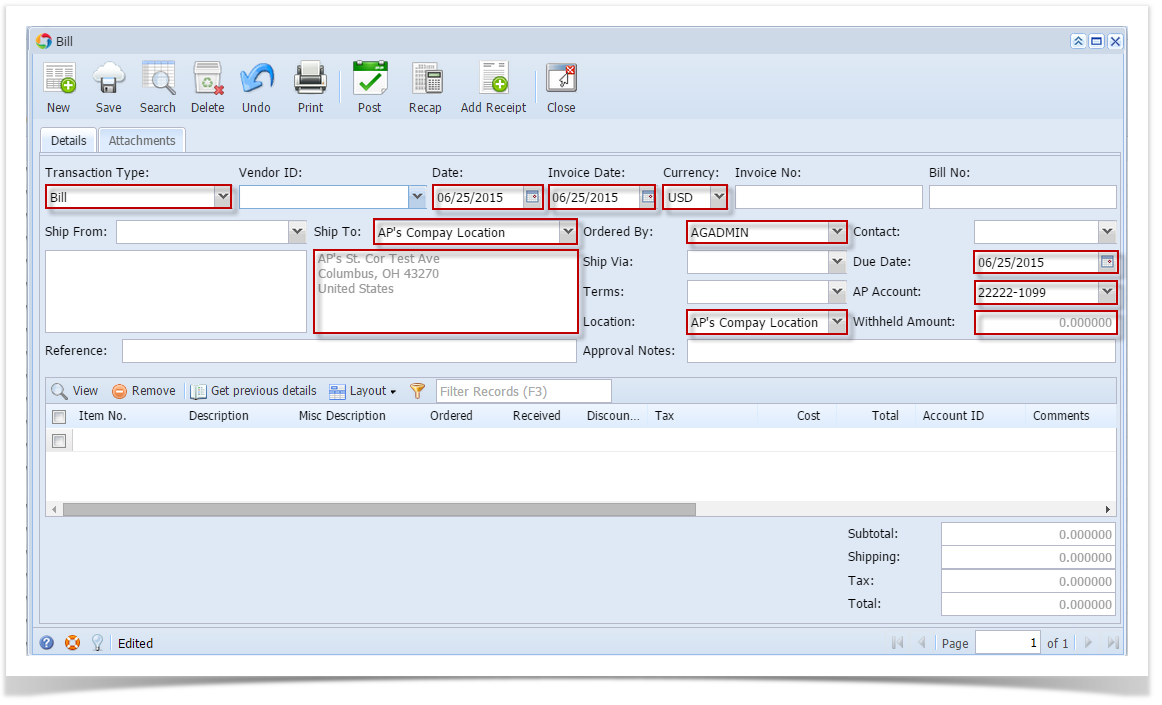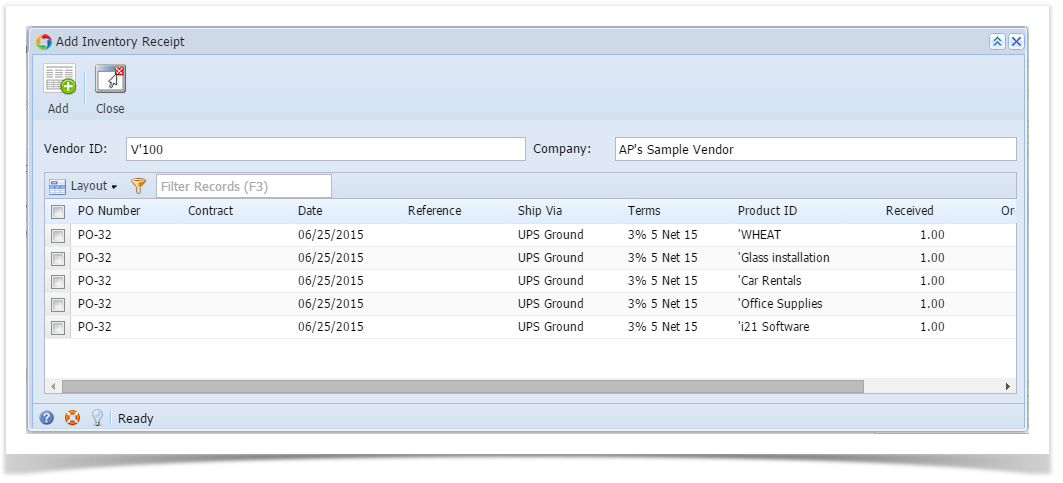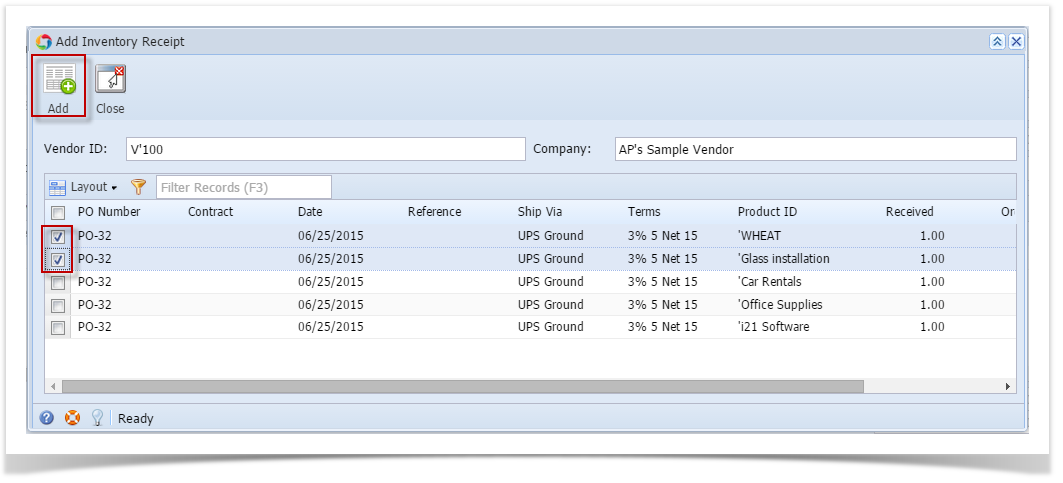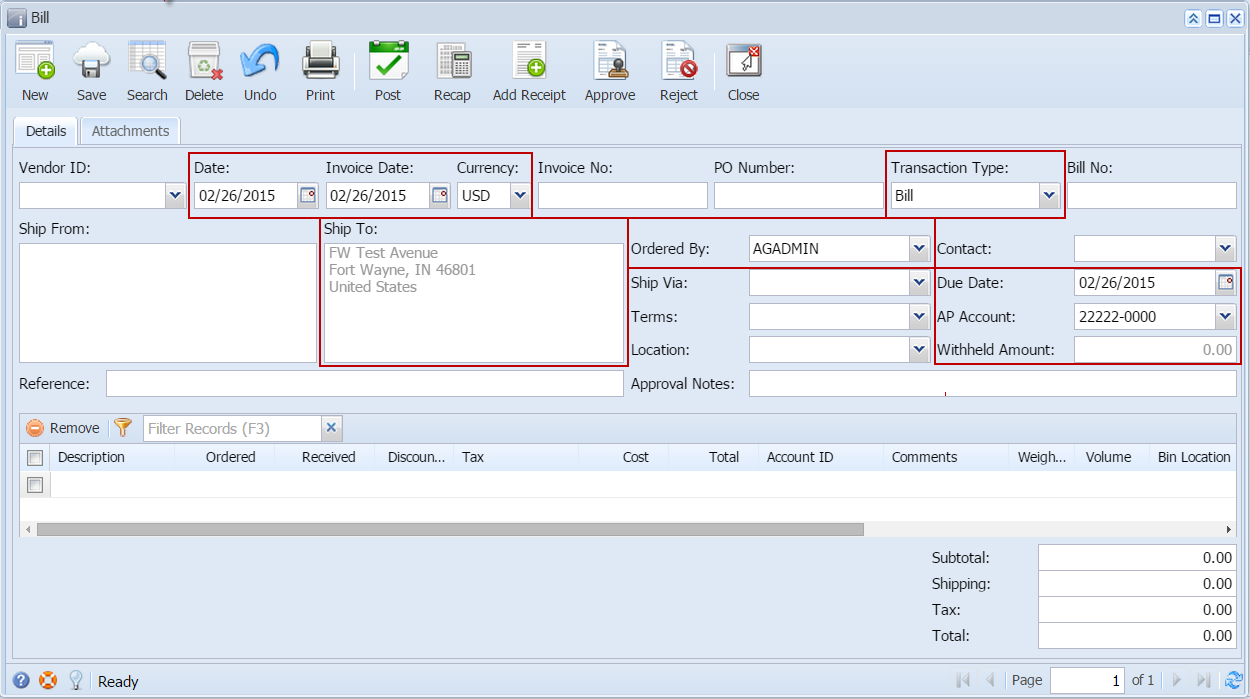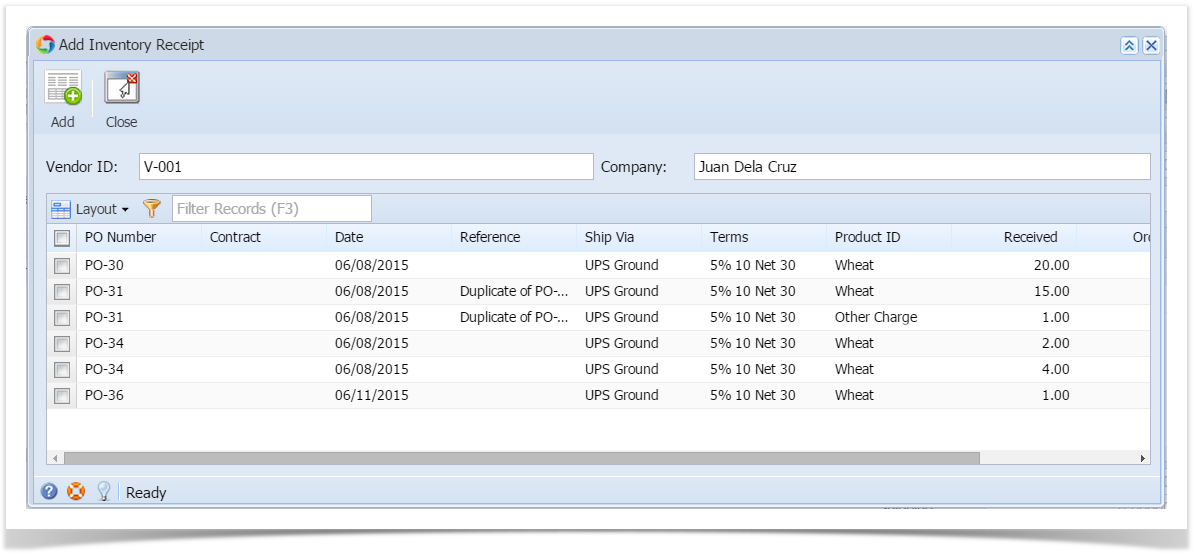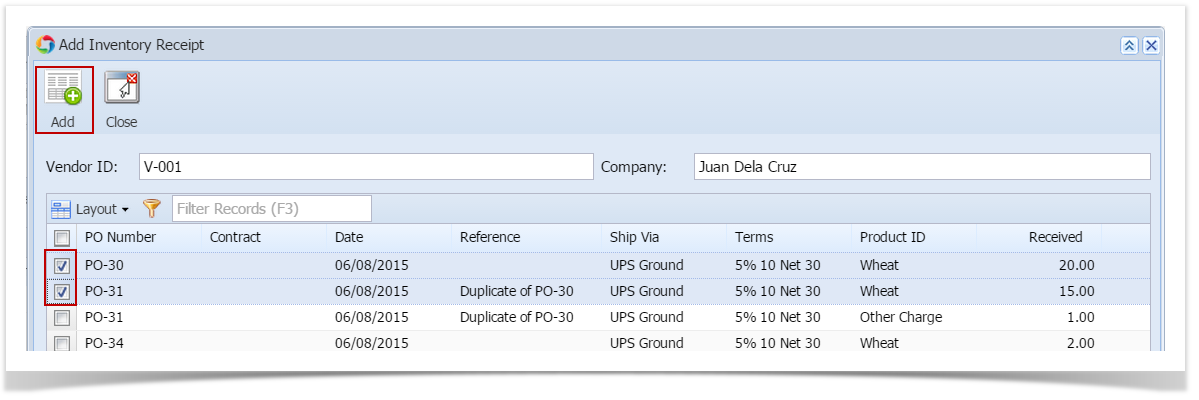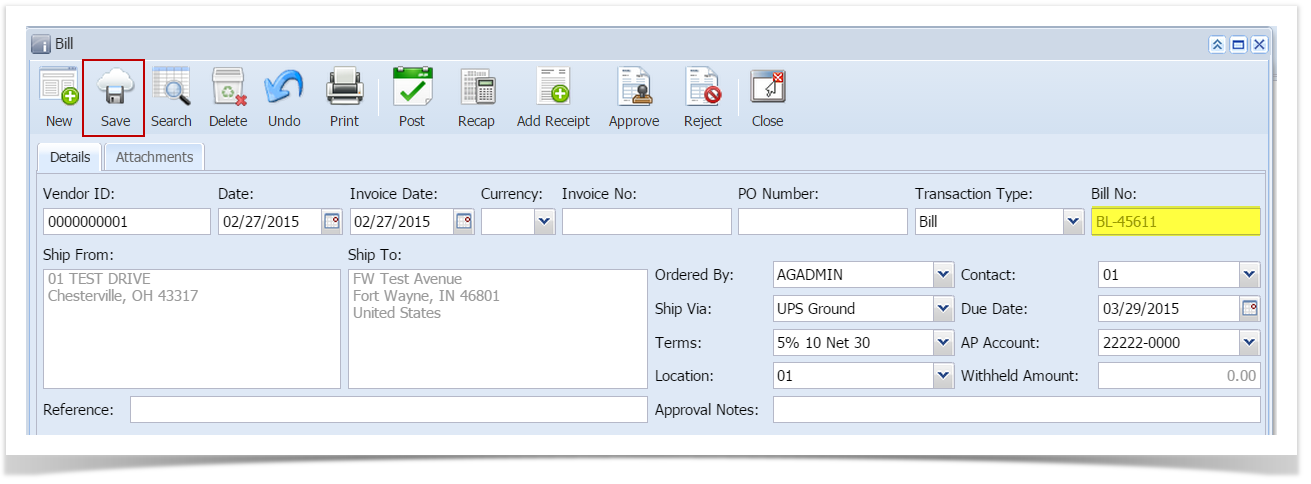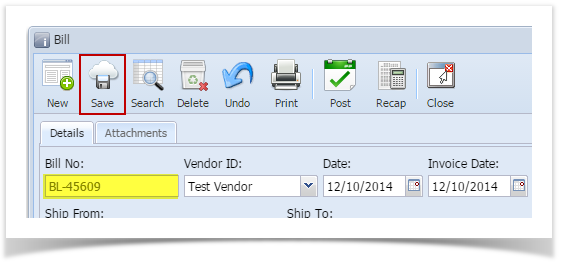Here are the steps on how to create Vouchers:
- From the Main Menu, click Purchasing (A/P)
- There are two ways to open blank Voucher screen for new record:
- Click Vouchers from menu and click New toolbar button from the Search Vouchers screen.
- Or you can click directly the New Vouchers menu under Purchasing (A/P) > Create list.
- Click Vouchers from menu and click New toolbar button from the Search Vouchers screen.
- The following fields were automatically populated:
- Transaction Type - will default to Voucher
- Invoice Date - will default to today's date
- Post Date - will default to today's date
- Due Date - will default to today's date
- Ship To - will show the default Location set for the user that is currently logged in. Address is displayed on the Ship To Address field below the grid.
- Ordered By - will default to the user that is currently logged in
- AP Account - will default to the AP Account set for the default Company Location.
- Currency - will default to the Functional Currency set in System Manager > Company Configuration screen > System Manager tab.
Withheld Amount - will default to 0.00
- Click Vendor combo box button and select existing Vendor from the combo box list. Name of the selected vendor will be displayed.
- If selected vendor has an existing payables, Add Payables screen will open.
- Select the item/s from the transaction you want to add on your voucher and click Add button.
- Selected item/s will be displayed on the grid together with the other details set for the item.
- After selecting Vendor: Terms, Contact, and Ship From, and Ship From fields will be automatically populated by the details entered in Vendor screen.
- Due Date field will update based on the terms assigned for the selected vendor and on the Invoice Date selected.
- Enter Invoice No.
Enter Reference if necessary.
For combo box fields, selecting different value is allowed if necessary.
Except for the items added via Add Payables screen, you can still add miscelaneous details and other charges on the grid.
- At the bottom of the screen is the Subtotal field that displays the total before taxes (if there's any) from all the line items entered in the grid were applied.
- The Tax field will display the calculated tax of all the details added on the grid.
- The Total field will display the added amount of the Subtotal and Tax fields. This is the amount that will be entered to the Accounts Payable account in the General Ledger when you post this transaction. You will also see this amount in the Payables form for this vendor.
- Click Save button. Voucher No field will now be filled in with a unique, system-generated ID automatically.
Overview
Content Tools
